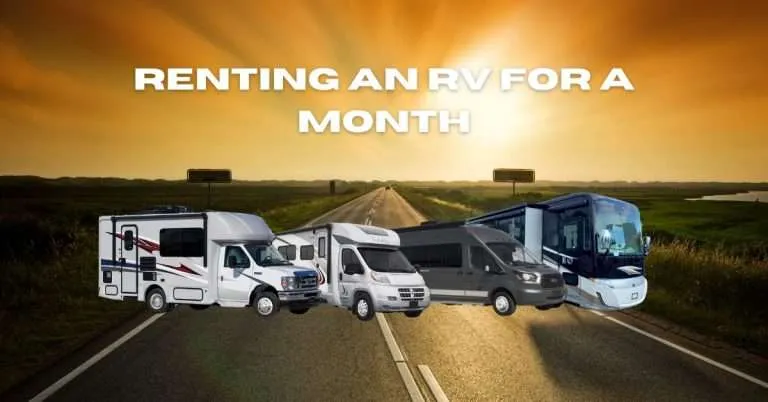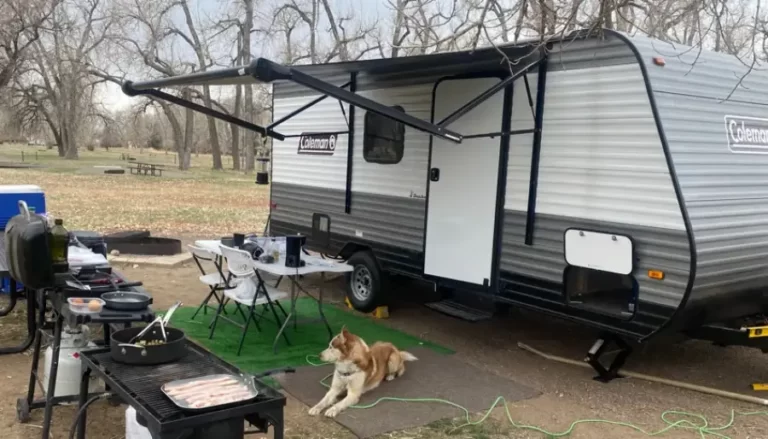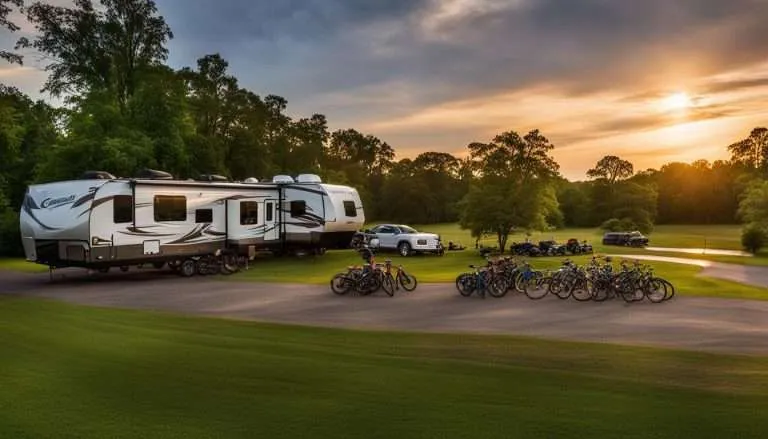What Happens When RV Furnace Runs Out of Propane: Avoiding the Chill on Your Trip

Traveling in an RV offers the comfort of home on the road, which includes a cozy, warm environment thanks to the onboard furnace.
This furnace depends on propane to function, and it’s crucial to understand what happens if your RV furnace runs out of this essential fuel.
The immediate consequence is a loss of heating, which can transform a snug living space into a chilly inconvenience, especially during colder months or nighttime temperatures.
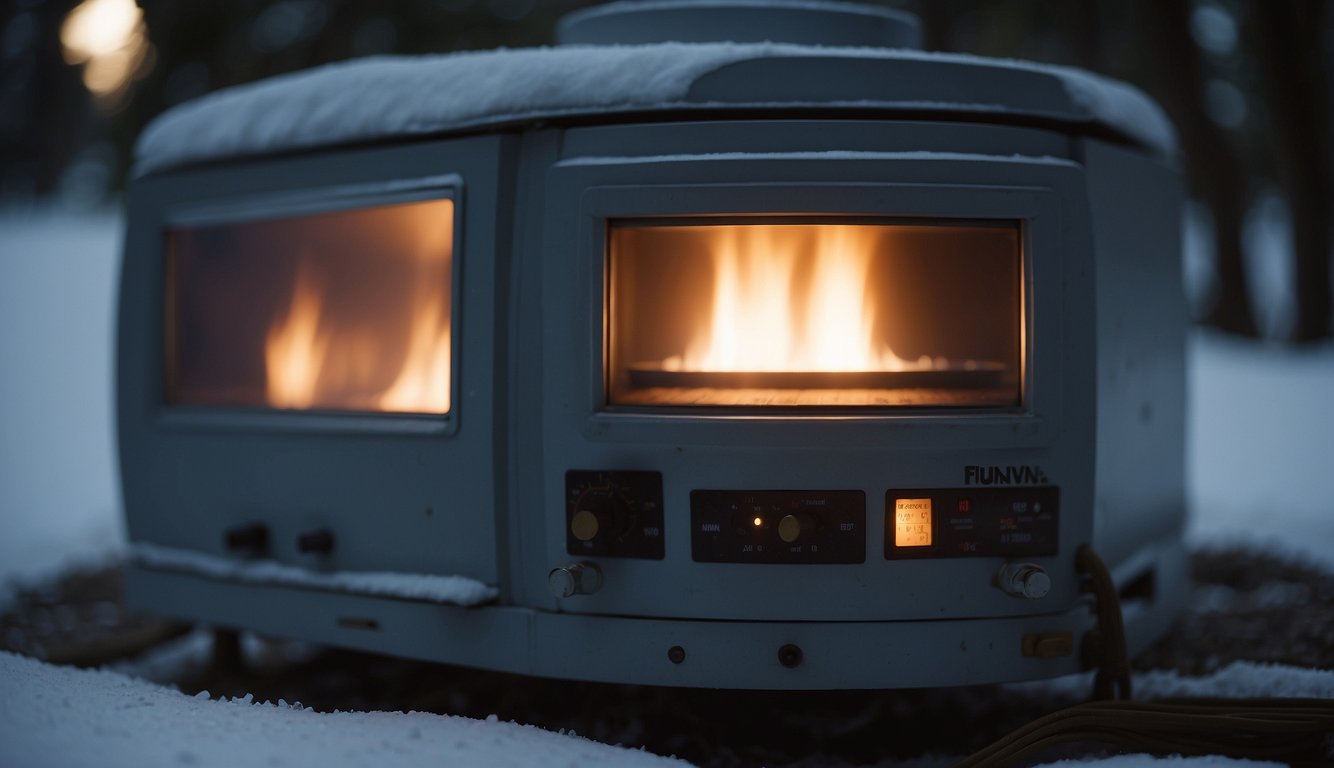
Ensuring the continued operation of your RV furnace is not just a matter of comfort but also a safety concern.
Running out of propane means your RV furnace will stop working, and the pilot light will extinguish, potentially leading to other issues related to your RV’s propane system.
Keeping an eye on propane levels and knowing the necessary steps to take if your supply runs out becomes paramount.
Knowing how to effectively reestablish your heating system after a propane outage helps minimize disruptions to your adventures on the road.
Key Takeaways
- Loss of propane causes the RV furnace to stop, affecting comfort and heat.
- Monitoring propane levels and recognizing when they are low is crucial for furnace operation.
- Knowing how to safely replenish and restart your furnace ensures continuous enjoyment and safety on your travels.
Recognizing the Signs of Low Propane
When my RV’s furnace isn’t performing as it should, I immediately suspect that my propane levels might be low. Understanding the furnace performance and thermostat indicators can help me confirm whether it’s time to refill my propane tank.
Furnace Performance Issues
- Inconsistent Heating: If I notice the furnace starts to produce less heat or inconsistent warmth, it’s a telltale sign. Consistent performance is key for proper heating, so when fluctuations occur, it’s likely due to the propane supply dwindling.
- Weak Flame: When I check my other propane-powered appliances, like the stove, a weak or sputtering flame usually means that the propane tank is near empty.
Thermostat Indicators
- No Response to Temperature Adjustments: If I try to increase the heat and the furnace doesn’t kick on, or it fails to raise the temperature, it could indicate that there’s not enough propane to produce the desired level of warmth.
- Pilot Light Issues: Many RV furnaces have a pilot light, and if I find that mine has gone out or won’t stay lit, this is often connected to insufficient propane levels.
Both of these aspects are critical to monitor to ensure I’m not caught off guard in a chilly situation. It’s important for me to keep an eye out for these issues to maintain a comfortable and safe environment in my RV.
Immediate Steps After Propane Depletion
When my RV’s propane runs out, it’s important for me to act swiftly to prevent any problems. Here’s what I do first to ensure everything is secure and ready for a propane refill.
Turning Off Propane Appliances
Immediately, I turn off all propane appliances to minimize the risk of gas leaks and damage to the appliances themselves.
This includes the furnace, water heater, and stove. I make sure the valve on the propane tank is closed to prevent any residual gas from escaping through the lines when I’m not looking.
Safety Checks and Leak Prevention
Once the appliances are turned off, I perform a thorough safety check for potential leaks. I inspect the lines, connections, and valves for signs of wear or damage.
If I suspect any leaks, I avoid engaging the ignition sources and I ventilate the area. Propane has safety features such as an odor that smells like rotten eggs to help detect leaks. If necessary, I reset my appliance’s systems according to the manufacturer’s guidelines to ensure they’re ready to operate once the propane supply is restored.
When it’s time to refill, I do so with a clear confidence that my RV and its systems are leak-free and secure.
Replenishing Your Propane Supply
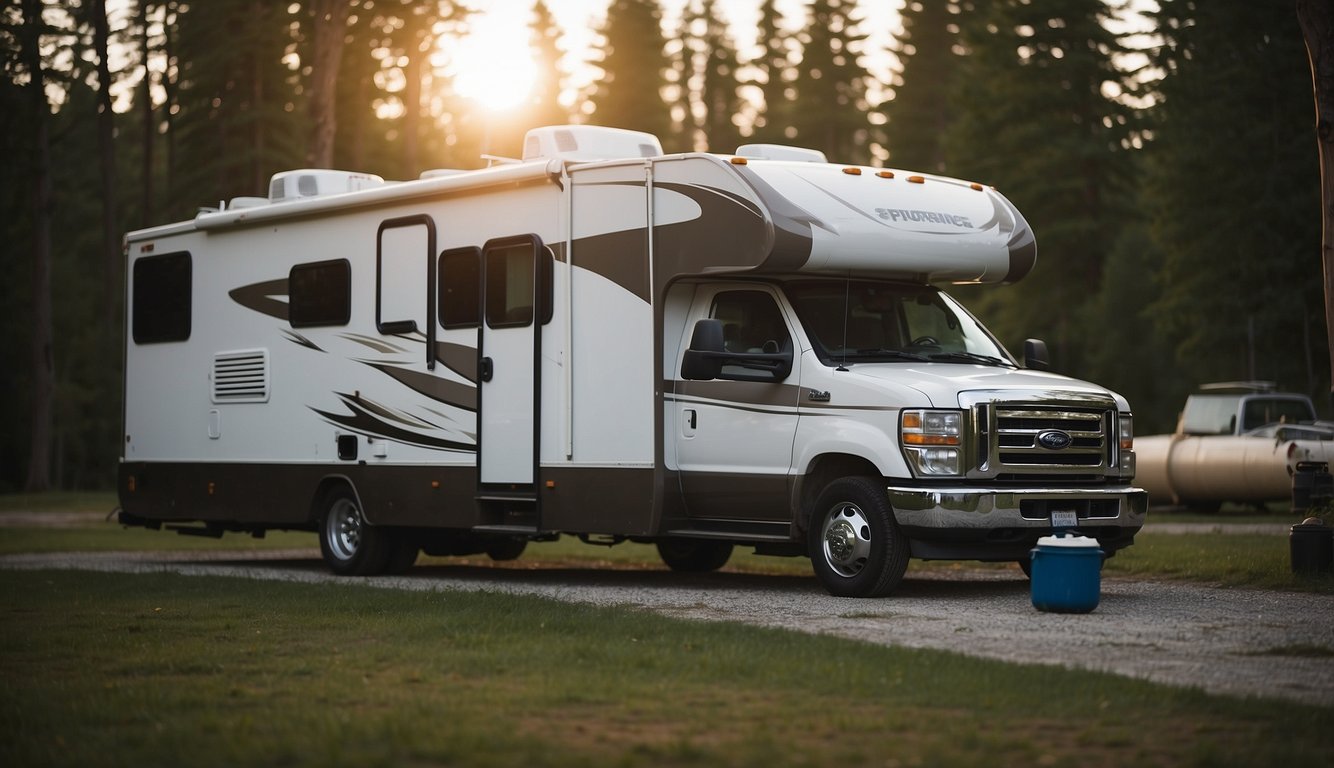
When my RV’s furnace runs out of propane, it’s crucial for me to replenish the supply promptly to maintain warmth and comfort. Below, I’ll walk you through refilling your propane tanks and what to do to safely reconnect and inspect the system.
Refilling Propane Tanks
To refill my propane tank, I always find a reputable service station with propane refill services. I make sure the propane tank is easily accessible and that the service technician can reach it.
Before filling, it’s important to check that my tank hasn’t expired and is in good condition. Expired or damaged tanks may need to be replaced or re-certified – a safety step I never skip. After the fill, I ensure the tank’s valves are properly closed to avoid any leaks.
Reconnecting and Inspecting the System
Once my propane tank is filled, I carefully reconnect it to my RV’s furnace system. I check all the lines and valves for any signs of wear or damage, as these could lead to propane leaks.
I take this opportunity to inspect the entire system, sometimes enlisting the help of a professional RV technician, to ensure everything is in working order. If I suspect air has entered the line after the tank was emptied, I have the system purged to prevent potential problems during ignition.
This careful inspection and reconnection are crucial to a safe and enjoyable RV experience.
System Recovery and Restart Procedures
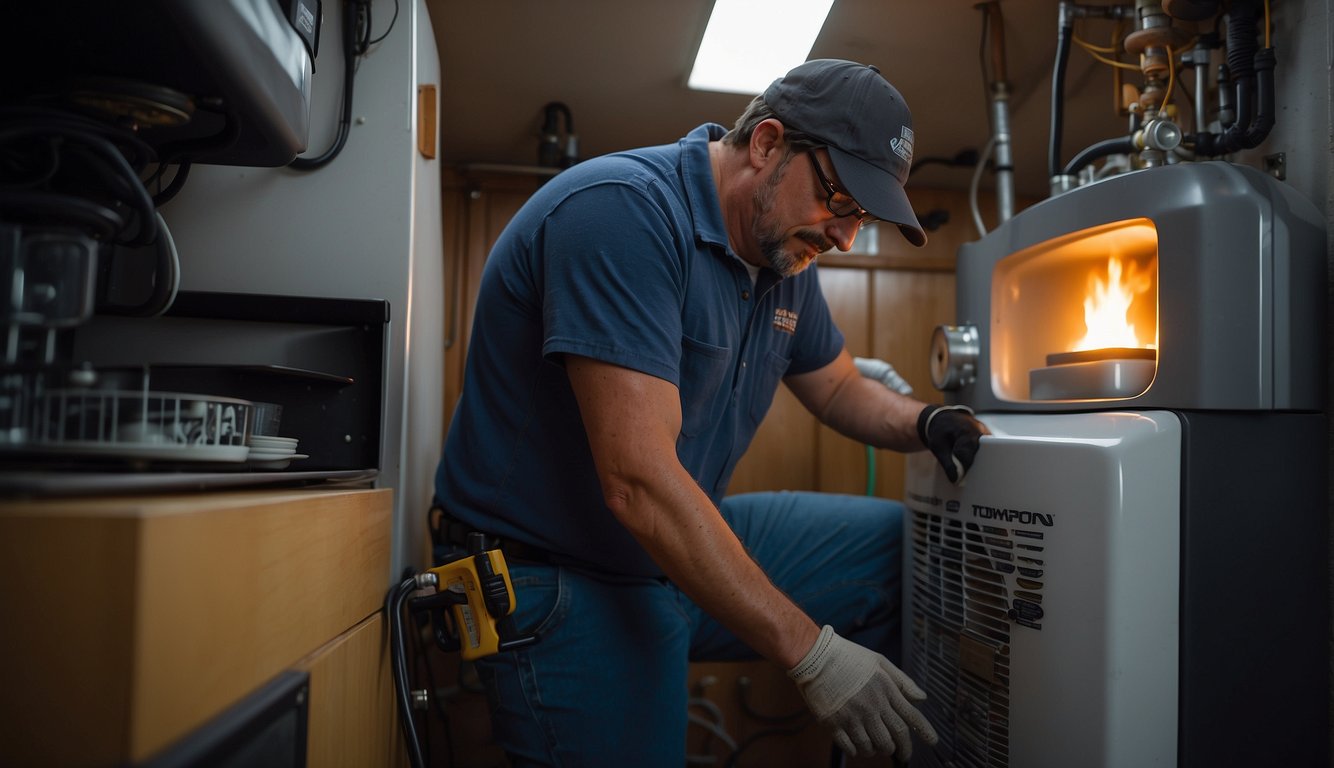
After your RV furnace runs out of propane, a proper restart is vital for safety and to ensure proper function. I’ll guide you through the essential steps to get your heating system running again.
Relighting the Pilot Light
To relight my furnace’s pilot light, I first ensure the propane supply is restored and stable. I turn off the furnace and wait a few minutes for any gas fumes to dissipate to prevent any risks.
Then, I carefully follow the manufacturer’s instructions to access the pilot light. After locating it, I turn the pilot light knob to the ‘pilot’ setting and hold it down. While holding the knob, I use a long lighter to ignite the pilot light. Once the blue flame is steady, I can release the knob and observe if the light stays lit.
Resetting the Furnace
If my furnace requires a reset after running out of propane, I start by checking the fuse to make sure there’s no blown fuse that needs replacing. After the fuses are checked, I locate the reset button, which is typically found on the furnace itself.
Pressing and holding this button for a few seconds can restart the furnace’s operations. If my furnace has an ignitor instead of a pilot light, I’ll follow the instructions to initiate the ignition sequence.
I often check the furnace fan operation to ensure it’s functioning without obstructions and that airflow is uninterrupted for optimal heating performance.
Preventive Maintenance and Long-Term Solutions
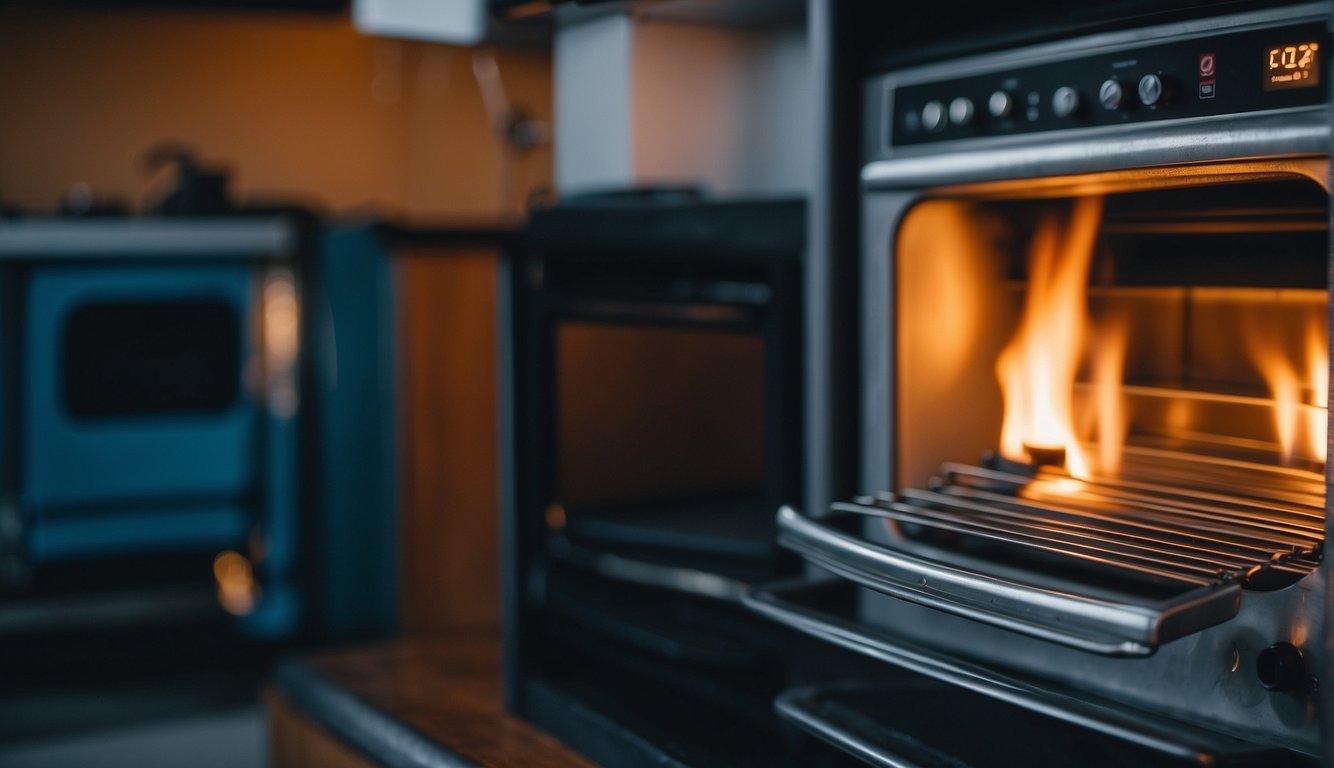
Preventing an RV furnace from running out of propane involves routine maintenance and considering alternative heating methods. I’ll guide you through the necessary checks and some long-term solutions to ensure warmth and safety in your RV.
Regular Maintenance Checks
To maintain my RV furnace’s efficiency and reliability, I perform regular maintenance checks. I typically:
- Inspect the propane levels before each trip and periodically during use.
- Confirm the furnace’s air flow by checking the exhaust vent for obstructions.
- Clean the furnace’s interior components, such as the burner and blower, to prevent debris buildup that can impede performance.
- Schedule an annual professional inspection to catch any potential issues before they worsen.
By adhering to a consistent maintenance schedule, I avoid common issues that could otherwise lead to an unexpected propane shortage.
Alternative Heating Solutions
In addition to regular maintenance, I have explored alternative heating solutions to use as a backup or when trying to conserve propane. Here’s my approach:
Electric Space Heaters: As a supplemental heat source, I use an electric space heater when I have access to shore power. This option is ideal as it lessens the burden on the RV furnace.
Safety with Space Heaters:
- Carbon Monoxide Detector: Ensures there’s a functioning carbon monoxide detector when using any heating appliance.
- Proper Placement: Keeps the space heater away from flammable materials and never leaves it unattended while operating.
Utilizing Shore Power: When park amenities allow, I rely on shore power to run electric heaters, thus saving propane for times when electrical hookups are not available.
By incorporating these preventive maintenance tasks and considering electric heating alternatives, discomfort due to a furnace running out of propane is significantly reduced, and my RV stays warm and cozy without relying solely on propane.
- Why Do My RV Lights Dim and Brighten? Understanding Voltage Fluctuations - February 8, 2024
- What Happens When RV Furnace Runs Out of Propane: Avoiding the Chill on Your Trip - February 8, 2024
- How Much Does an RV Inspection Cost: Budgeting for Your Next Adventure - February 8, 2024



